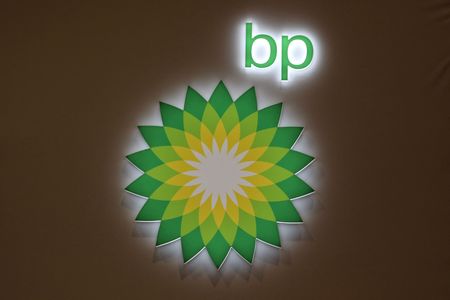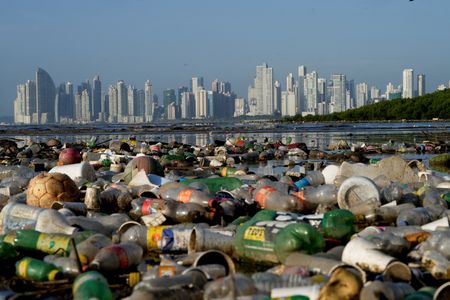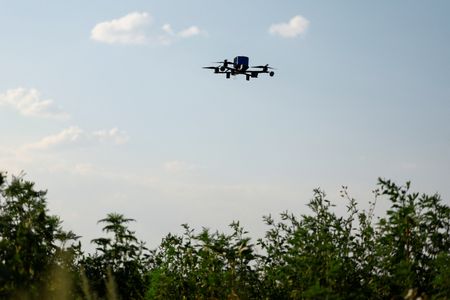By Shadia Nasralla and Yadarisa Shabong
(Reuters) -BP has made its largest global oil and gas discovery in 25 years in Brazil’s Santos basin, it said on Monday, in what may be a major boost for the British company’s strategic shift away from renewable energy to refocus on fossil fuels.
BP is seeking to bolster oil and gas in its portfolio to regain investor confidence and revive underperforming shares.
It said it planned to create a major new output hub at the Bumerangue discovery in Brazil, which a BP spokesperson said was probably the company’s biggest since Shah Deniz in 1999, a gas and condensate field in the Azeri part of the Caspian Sea.
Shah Deniz, with around 1 trillion cubic metres of gas and 2 billion barrels of condensate initially in place, produced 28 billion standard cubic metres of gas last year, according to BP.
The company gave no reserve estimate for the Brazilian block.
“Brazil is an important country for BP, and our ambition is to explore the potential of establishing a material and advantaged production hub in the country,” said Gordon Birrell, BP’s production and operations chief.
BP shares gained 1.3% by 1107 GMT, outperforming a broader index of European energy companies which was up 0.1%.
“This find may well see BP’s upstream portfolio longevity extending well into the 2030s/40s, and it is this that has been the biggest issue and concern,” Bernstein analyst Irene Himona said in a note.
“Although we cannot extrapolate as it is too early, and each well and each reservoir is different, we believe the data … provides support that the potential scale for this 100% BP discovery could be a game changer.”
The Bumerange block is “promising and strategically located” in Santos basin, wrote Jean Paul Prates, former CEO of state-run oil firm Petrobras on social media, while warning that fields with high carbon dioxide (CO2) content in its associated gas can be “uneconomic.”
Associated gas is a byproduct of oil production, found mixed with oil in reservoirs or as a cap above the oil.
“BP has yet to disclose the CO2 level in Bumerangue,” wrote Prates, adding this will “ultimately determine Bumerangue’s viability.”
BP said in its Monday announcement that results from the rig-site analysis indicate elevated levels of CO2.
It did not immediately reply to the questions about economic viability of the field raised by Prates.
BP, which forecast its oil and gas production at 2.3 million to 2.5 million barrels of oil equivalent per day by 2030, said this was its tenth discovery this year, following findings in Trinidad, Egypt, Brazil and others.
The company produced 2.4 million barrels of oil equivalent in 2024 and expects lower production this year.
BP had secured the Bumerangue block in the Santos basin far off the Brazilian coast in a “pre-salt” formation beneath the ocean floor in December 2022 with what it said were “very good commercial terms.”
Fellow London-listed rival Shell this year made a final investment decision for another project in the Santos Basin.
BP is set to report its second-quarter results on Tuesday.
(Reporting by Yadarisa Shabong in Bengaluru and Shadia Nasralla in London; Additional reporting by Fabio Teixeira and Marta Nogueira in Rio de Janeiro; Editing by Mrigank Dhaniwala, Emelia Sithole-Matarise and Nick Zieminski)









